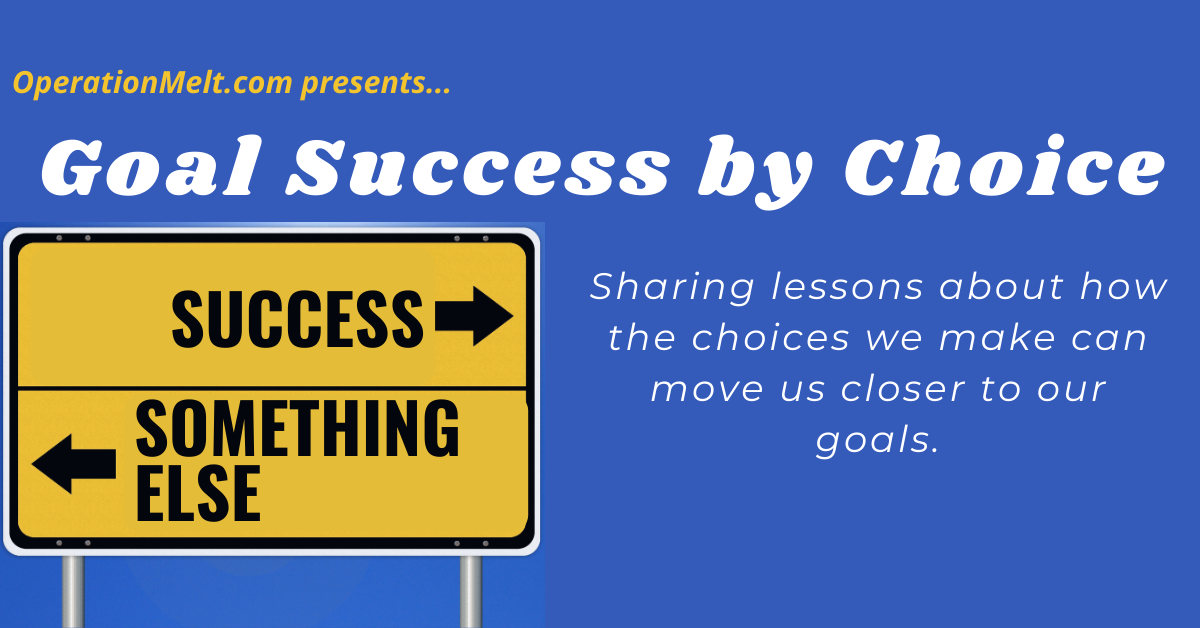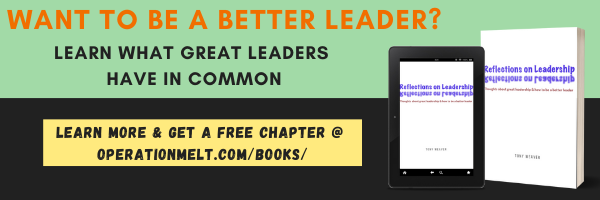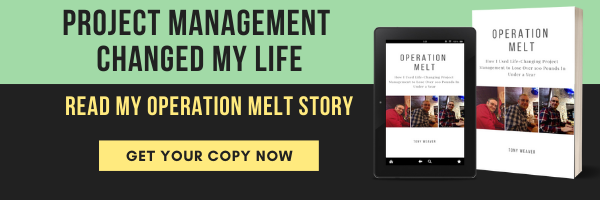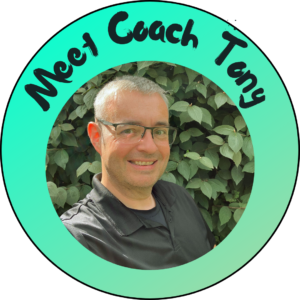Do you have dreams that you are trying to make come true? Do you have a goal that you are trying to crush? Success doesn’t happen by chance. You don’t have to get lucky or win the lottery to live the life of your dreams.
Success is a choice; really, a series of choices.
By making the right daily choices, adopting good habits and behaviors, and approaching life with the right mindset, you can make your own dreams come true. You will be unstoppable!
Goal Success by Choice helps you make the choices that will move you closer to your goals and keep you from holding yourself back.
I hope this post helps you get a little closer to crushing your goals.
Amuse Bouche
Before we get to today’s post, I offer you this light “amuse-bouche” to entertain your mind before we get down to business. Like any other amuse-bouche, you may hate my “dad joke,” but it is worth every penny that you paid for it, right?
Did you know that are three types of people in the world? Those who can count and those who can’t.
Ready for Success?
Our deepest fear is not that we are inadequate. Our deepest fear is that we are powerful beyond measure. It is our Light, not our Darkness, that most frightens us.
Marianne Williamson
Here we are, four weeks into learning how to create goals with staying power that will help you make your dreams come true. Guess what happened to all of those big New Years Resolutions that you were envying a month ago? Statistically, over 70% of those resolutions are now failed. The person had a setback that they couldn’t overcome, moved onto some other goal or simply gave up. That’s sad.
You aren’t going to be a member of the failed resolutions crowd! You have tools now to build better goals.
Let’s recap what we have discussed so far.
Instead of letting your FOMO get the best of you when everybody else is talking about their big New Years Resolutions, you chose to take stock of where you are in your life today. Using the Wheel of Life (download the template in the Resources section of OperationMelt.com), you rated your level of happiness with each of the significant areas of your life. The lower-rated areas became your target areas for goal-setting. See Feeling Left Out?
Once you identified the areas of your life that needed some attention, you tapped into that powerful brain of yours. As a next step, you used my ABCD goal-setting process to brainstorm what goals are most important to you. Then you prioritized and selected one or two primary goals that would be your focus for the next year or so. See What Do You Want?
Next, you tapped into your brain again with a vital mind hack to help you reach your goal. You created your “why.” By creating a “why” that was important enough to you, your goal moved from being something held only in your thinking brain to one that is present in your feeling brain too. See But, Why?
This means that you now know what you want to achieve and why you want to achieve it. Before you start building a plan to put your goal into action, the final step is to make sure that your goal is actionable. Plus, there is one more step to make sure you have a clear picture of what the future holds.
Are you ready for success?
Get SMART
Now that you have all of the pieces of your goal figured out, it is time to turn it into a SMART goal.
SMART is an acronym to help you ensure that your goals are as well-defined as possible. While there are multiple versions of what SMART means, I will be sharing the most common one here.
- Specific: Does your goal make it clear what you want to accomplish?
- Measurable: Are you able to measure where you are today and your progress along the way?
- Attainable: Is your goal something that you can accomplish? Unrealistic goals are actually demotivators.
- Relevant: Does your goal matter? Refer back to your why for this.
- Time-based: Is there a timeline for when you will accomplish your goal?
An example of a SMART goal is what I wrote about in my book Operation Melt: How I Used Life-Changing Project Management to Lose Over 100 Pounds in Under a Year. I had decided that it was time to lose weight, but I didn’t stop with “I’m going to lose weight” and expect success.
- I did my research to figure out what a safe but aggressive rate of weight loss is.
- In this same research, I confirmed a set of things I could measure in my daily behavior in addition to just stepping on the scale.
- I wrote out a strong why that consisted of six very emotionally meaningful points.
Voila! I had a SMART goal. I am going to lose over 100 pounds in a year following a diet and exercise plan that worked for me so I could correct my forty-year embarrassment and live a healthier and happier life.
Have you written your SMART goal yet? Let’s do it now.
- Is your goal specific enough that you will easily know when you’ve reached it?
- Is your goal measurable, so you will know that you’ve reached it? Do you know how to measure your daily behaviors that contribute to your results?
- Is your goal achievable/attainable? Have you considered it and done your research to know that it is possible? Do you believe in yourself?
- Is your goal relevant, and have you figured out why your goal is important to you?
- Does your goal have a time frame like a date or duration?
By putting in a little bit of work to make sure that your goal is SMART, you set yourself up for success. Research has found that writing down specific, attainable goals are about 50% more likely to achieve their desired outcomes. That sounds like a good use of time to me.
I Can See Clearly
When creating your SMART goal above, I asked whether you believe in yourself as part of the criteria for whether or not your goal was achievable. More goals die because of self-doubt than almost any other cause. Henry Ford said, “whether you think you can or you can’t, you’re right.” Belief in yourself is a significant contributor to goal success; if you can’t see your goal succeeding, it probably won’t.
A critical step to building the belief in your ability to achieve your goal is to visualize what life will be like once your goal is achieved. It is time to create a vision by imagining yourself living your dream.
Write down (yes, it has to be written down for it to work) a description of what your life will look and feel like after achieving your goal or goals. Imagine that you are writing a letter to your today self from your future self after your goal is complete. Fortunately, you know when that will be because you just clarified your T in your SMART goal. In this letter, you reflect on what your life is like and tell your today self all of those details.
By writing a present tense summary of your life in the future, you will create a visualization that your mind will seek to fulfill. This might sound strange, but this is how your brain works. When it has a crystal clear picture of what it is supposed to be creating, it will figure out how to create it.
Just remember to focus on the 4 Ps to an effective vision:
- Present: write your vision in the present tense as if you are living it today. Don’t use future tense words like “will.”
- Personal: your vision should come from a personal perspective using words like “I” and “me,” this is why thinking of your vision statement as a letter from yourself works so well.
- Positive: focus on positive language avoiding words like “not” and “don’t.” For example, if your goal is to quit smoking, your vision statement shouldn’t say, “I’m not smoking anymore.” Instead, focus on the positive ways your life is different without smoking. Talking about what you’ve given up puts that thing back inside your mind.
- Passion: your vision should be full of the emotion you feel in your future life. If you can feel the passion for the future life, you won’t be stoppable as you pursue it.
Get started with your vision by just free-writing for at least five minutes. Capture all of the details of your ideal future life that you are pursuing. Write as many things as come to you.
Once the ideas stop, it is time to create your final vision statement in a single summarized paragraph. Keep this vision statement in a place where you can see it. Refer back to it when times get tough, and you need a little extra boost of motivation to keep yourself going.
You may also want to consider creating a vision board for the future. A vision board is a collage of images from magazines or from online sources that represent where you see yourself in the future. Looking at a vision board should help you feel how you will feel after you achieve your goal. This makes it real today and keeps you focused on the prize at the end.
Goals in an Elevator
Your goal, your why, and your vision are all very personal and private things. They are not likely things that you will share with every person you know. But, you are also probably going to want people to know that you have committed to a goal. In fact, if your goal is something visible like weight loss, people will see it happening. Then, they are going to ask questions.
This presents a bit of a challenge. You don’t want to share all of the details of your goal with everybody. But, you will want to be prepared to talk about your goal and share some of the details. How do you accomplish both?
The solution: the elevator speech.
Picture yourself in an elevator traveling between a handful of floors. How long is that ride? Probably somewhere between thirty and ninety seconds, right?
Now, imagine using this elevator ride to summarize your goal to a friend or colleague. You would need a very concise version of your goal that you could share in thirty seconds and contains only the information you were comfortable sharing. But, this summary also needs to be interesting enough to hold the other person’s interest.
This thirty-second summary of your goal is called your elevator speech.
Thinking through your elevator speech in advance will help you be comfortable when answering somebody’s question about your goal in the future.
Don’t stress about starting with a blank page because it isn’t really blank. You have written many things as you have been crafting your goal, and you’ll likely be able to reuse some of that information to build your elevator speech.
Is your elevator speech ready?
So What?
Have you figured out your goal and why it is important to you? If so, you can take one more step to make sure you are ready to achieve your goal. It is time to get ready for success.
Need a partner to help you get ready for success? That’s what I do!
Click Here to learn more about my Operation Melt coaching services.
Beware of the Robots!
Was this post helpful or interesting to you? Do you want to read more? Don’t trust it to the social media algorithms.
Defeat the robots by joining my email list below and get these posts delivered directly to your inbox every week.




